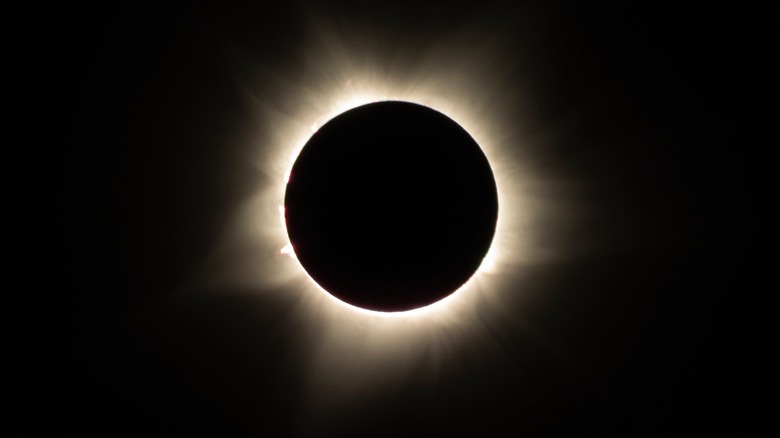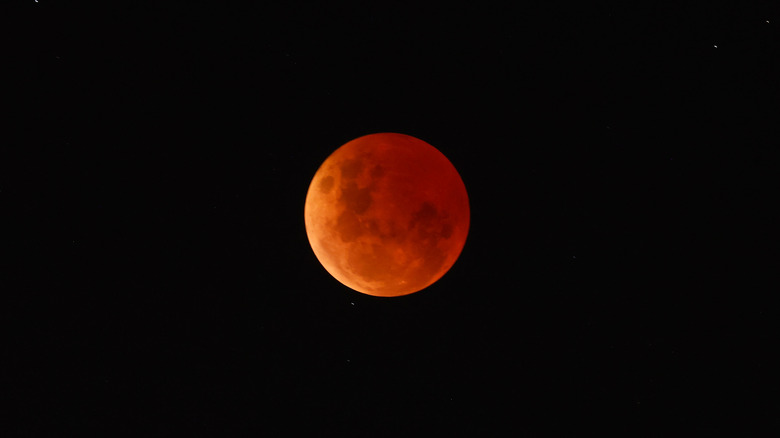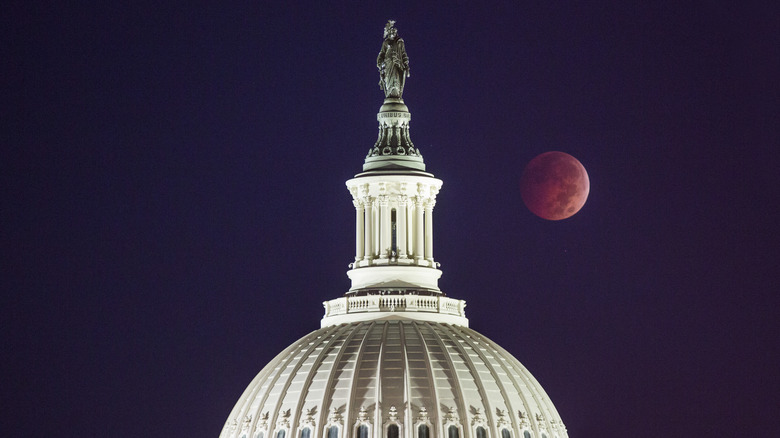
aeonWAVE/Shutterstock
You’ve probably been hearing a lot about the solar eclipse coming Monday, April 8, but whether you’ll be able to see the full eclipse depends on where in the United States you live. Multiple experts who spoke to NPR stressed that it’s a dramatically different experience to be in the path of totality versus being in the many places where you would witness a partial eclipse.
«It’s 100% or nothing,» retired NASA astrophysicist Fred Espenak told NPR. «There’s such a radical, dramatic difference between a 99% partial and a 100% total. There’s no comparison.» Unless it’s a total eclipse, the effect isn’t that dramatic; it could just look comparable to an overcast sky, not the sudden total darkness that a total eclipse brings. After all, it’s the sun: It’s so gigantic and powerful that it’s trivial for it to light up the sky even when heavily obstructed.
Having said all that, there are two different kinds of eclipses, solar and lunar, and they tend to get easily confused. So if you’d like to learn what differentiates the two, read on so we can tell you all about it.
The differences between a lunar and solar eclipse

Darrian Traynor/Getty Images
Let’s start with solar eclipses. As defined by sources like the National Weather Service, Encyclopedia Britannica, and NASA, a solar eclipse is when the Moon’s orbit takes it on a path that causes it to land directly between the Sun and the Earth, casting the Moon’s shadow on Earth. If you’re in the path of totality, where you can experience a full solar eclipse, the effect of this is a period of a few minutes where day suddenly turns into night and then back. If not a total eclipse, it can be an annular eclipse, wherein the outer edge of the Sun is still visible.
A lunar eclipse, meanwhile, is when the Earth passes between the Sun and the Moon, casting a shadow on The Moon. Since the Moon is so much smaller than the Earth, there’s no such thing as an annular lunar eclipse. Unlike the total darkness of a total solar eclipse, though, the effect of a total lunar eclipse is usually that of the moon appearing to be red in color, commonly known as a blood moon. The specific coloring is because the reddish shades of sunlight are the ones that make through the dust in the Earth’s atmosphere and get cast onto the Moon.
Also specific to solar eclipse is that you risk serious damage to your eyes by staring at it during the transformation, necessitating the use of safety devices like pinhole viewers. You’re OK to look directly at it during the few minutes of totality, though.
How often do eclipses happen?

Brooks Kraft/Getty Images
You can expect a total solar eclipse to happen somewhere on Earth roughly every year and a half, and that frequency increases to twice a year if you also include annular eclipses. However, if you pick a specific spot on the Earth’s surface at random, it’s likely to experience a total solar eclipse closer to once every 400 years. Lunar eclipses, meanwhile, happen annually, more or less.
Even though solar eclipses technically happen twice as often as lunar eclipses, the perception may be the opposite. That’s because there is no path of totality for a lunar eclipse. You can see a full lunar eclipse from anywhere on Earth, provided that you can see the Moon.
According to the National Weather Service, the last solar eclipse was an annular one on October 14, 2023, and the path of totality traveled from Oregon all the way down to the northern part of South America. The last proper total solar eclipse was December 4, 2021, when it could be seen from Antarctica for just 114 seconds.
Of the recent eclipses listed by the National Weather Service, which goes back to July 2019, the longest was the October 14 annular eclipse which lasted five minutes and 17 seconds. The shortest was another annular eclipse on June 21, 2020, when, for just 38 seconds, parts of Africa, southern Asia, China, and the western Pacific experienced total darkness before daylight returned to the sky.